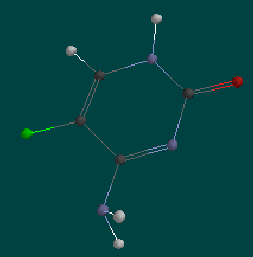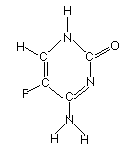 (Molecule rendered using Spartan) (Molecule rendered using Spartan) | The image to the left is a structural model of flucytosine. Each ball represents an atom and each wire represents a bond between the atoms. The grey atoms are carbon, blue atoms are nitrogen, red atoms are oxygen, white atoms are hydrogen, and green atoms are flourine. Below is a chemical structure of the flucytosine molecule, in the same form as the image to the left.

|



